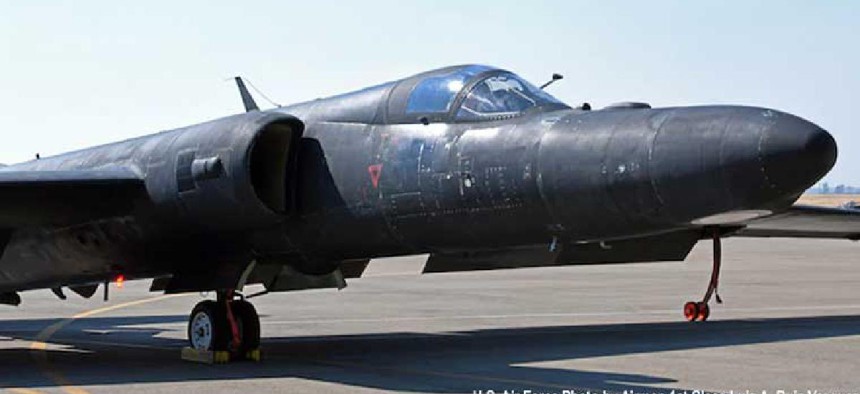Famed spy plane gets AI upgrade with Kubernetes
The Air Force has equipped a legacy U-2 surveillance aircraft with machine learning thanks to Kubernetes, an open-source container-orchestration system that automates the application deployment, scaling and management.
The Air Force has equipped a legacy U-2 surveillance aircraft with machine learning thanks to Kubernetes, an open-source container-orchestration system that automates the application deployment, scaling and management.
Tested on a local training sortie on Sept. 22, Kubernetes allows the U-2 to combine the power of four on-board legacy computers to run advanced machine learning algorithms without negatively impacting the aircraft’s flight or mission systems. “The successful combination of the U-2’s legacy computer system with the modern Kubernetes software was a critical milestone for the development of software containerization on existing Air Force weapon systems,” Air Force Chief Software Officer Nicolas Chaillan said.
This is not the Air Force’s first sortie into upgrading existing weapons systems with modern capabilities. In 2019, Chaillan challenged the Air Force’s SoniKube software factory to install Kubernetes on an F-16 fighter jet in 45 days “to demonstrate that it could be done,” he said in a presentation.
Chaillan explained that to get the containers working on the jets, the team had to "bring the entire stack,” which included the Cloud One infrastructure layer, the enterprise services and hardened containers layer and the applications.
The software was developed at the U-2 Federal Laboratory, an organization dedicated to speeding the delivery of advanced technologies to the battlefield by bringing the warfighter, developer and acquirer together under one roof. It promotes “edge development,” where new software is integrated with operational systems in a bounded, safe environment.
“The integration of Kubernetes onto the U-2 capitalizes on the aircraft’s high altitude line of sight and makes it even more survivable in a contested environment, said Col. Heather Fox, 9th Reconnaissance Wing commander. “We look forward to working with other platforms across the DoD to export this incredible capability.”
This article first appeared on GCN, a Defense Systems partner site.
NEXT STORY: DOD pushing RPA to the next level






